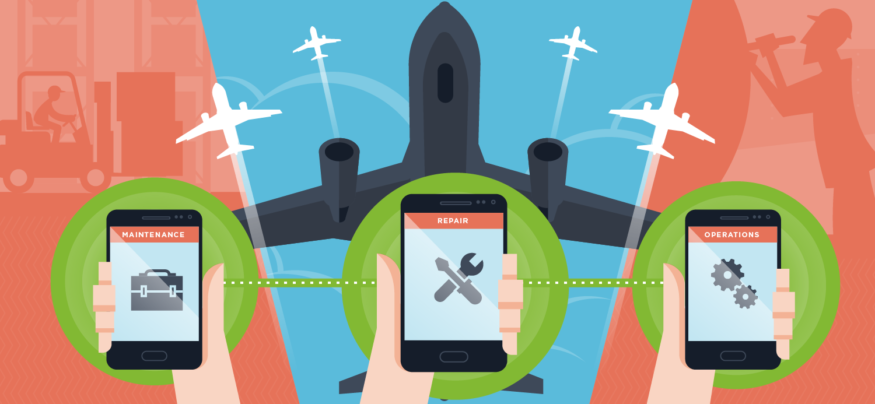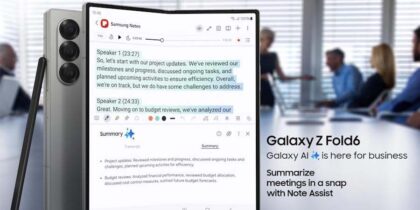Most travelers today only think about airline maintenance when their flight is delayed. Sure, it’s an inconvenience for the passengers on board, but unscheduled aircraft maintenance also costs airlines millions of dollars annually. Whether the issue is lost revenue, rush charges for repairs and replacement parts, aircraft substitutions or subsequent delays throughout the airline’s network, these seemingly minor complications can be significant. To avoid unscheduled maintenance issues, many airlines are turning to maintenance, repair and operations (MRO) software that allows airlines and maintenance contractors to manage the process across their fleets.
All commercial aircraft must undergo regular inspections and maintenance based on operation time, primarily hours in service or takeoff and landing cycles. In addition, passenger and cargo aircraft are required to be maintained in accordance with airworthiness regulations set by strict international and national regulations. Failure to comply with these regulations can lead to severe adverse consequences, as well as fines or grounding of aircraft or even entire fleets. By implementing an enterprise-level MRO system, airlines can dramatically improve their financial and in-service performance. Aviation MRO software gives everyone, from technicians in the hangar to financial managers, the information they need quickly and efficiently, and it also allows everyone involved to access this information at a glance.
Airlines see the value in MRO aviation systems. According to a 2015 report by Visiongain, the global MRO market is expected to be a $61-billion industry in 2015. Those that use MRO software will be able to manage their operations to minimize unscheduled maintenance, reduce costs and improve performance throughout the enterprise value chain. But managing the MRO of a constantly moving fleet of aircraft is no easy task, considering that it usually involves a team of engineers and aircraft that may span several locales. To address this common issue, many airlines have deployed MRO software using mobile devices, such as smartphones and tablets, to connect technicians on the ground with the enterprise for coordinated MRO management.
MRO Solutions Deliver Enterprise-Wide Planning and Productivity
One example of this software is developed by TRAX USA Corporation. Its MRO software resembles an enterprise resource planning (ERP) solution in that it connects many aspects of maintenance and operations, including interfacing with ERP and human resources software. For instance, the aviation MRO system can interface with accounting systems to pay parts invoices, and it can access human resources systems to ensure technicians have up-to-date credentials to work on the aircraft and its components. The TRAX software, which was designed from the ground up for aviation MRO, tracks assets from acquisition through operations, with customized information for each aircraft. The system also schedules maintenance based on aircraft usage, while managing repairs and the need for parts that arise during operations.
Managing the complexity of a passenger aircraft such as a Boeing 737, which may have more than 3,000 components, can be a daunting task, explains Christopher Reed, managing director for TRAX. But the TRAX software helps airlines to coordinate that process, while maximizing profitability. “Our customers follow their processes from the beginning where they’ll take delivery of an asset, and they will load the maintenance program for that asset into our application, and from then on the maintenance, operation and compliance details for that asset will be managed through the application,” says Reed.
To automate business processes, airlines and MRO suppliers integrate Comply365 workflow mobility solutions that deliver instant access to critical documents and preset forms that can be rapidly populated. With regulatory oversight so important in the MRO space, Comply 365 makes it easy to manage processes and reduce heavy expenses associated with paper trail audits.
And to deliver enterprise-grade security in sensitive environments, Samsung KNOX delivers a manageable, on-device mobile solution that separates enterprise and personal data with technology that’s secure enough to run on government-grade networks. It integrates with popular protocols for secure communication links, and it offers a cloud-based management solution, KNOX EMM, to manage Samsung devices.
Mobile Devices Let Information Flow Through MRO Organizations
Over the years, the aviation industry moved from paper-based management to spreadsheets and local databases to centralized MRO solutions. Now, mobile devices such as the rugged Samsung Galaxy Tab Active are changing the aircraft MRO landscape. “Rather than generating paper, everything can now be done through electronic means,” says Reed. “Technicians can work from phones and tablets, read the work they have to perform, complete that work and sign off electronically and keep electronic records.”
Technicians can use mobile devices to take videos and photos to share with managers to determine work plans, while also making the media part of the repair history file. Inspectors can then send images to the MRO team to determine if repairs are necessary. Reed adds, “With a mobile device you can react much more quickly. Before if there was a problem they’d talk about it, make a write up and send in the paper. Now they can hit a button and send a message straight to the manager’s smartphone. They can share photos and get immediate feedback.” On an inbound flight, for example, the aircraft can automatically send a signal about a fault to the maintenance staff on the ground who can check parts inventory and order a part to the flight line. That way the mechanical problem won’t delay the next flight.
Before it installed the TRAX MRO aviation software, says Reed, one airline’s heavy maintenance checks on a single aircraft took as long as six weeks. Now, maintenance checks take just one week due to having all the work and parts scheduled beforehand. Another airline slashed maintenance costs by 25 percent, or $70 million a year. The TRAX system also maintains records of parts’ warranties, which saved one airline $20 million through warranty reimbursements.
While centralized databases and proprietary mobile systems have been part of the industry in the past, affordable mobile devices from Samsung make mobility an integral part of the MRO software value proposition.








